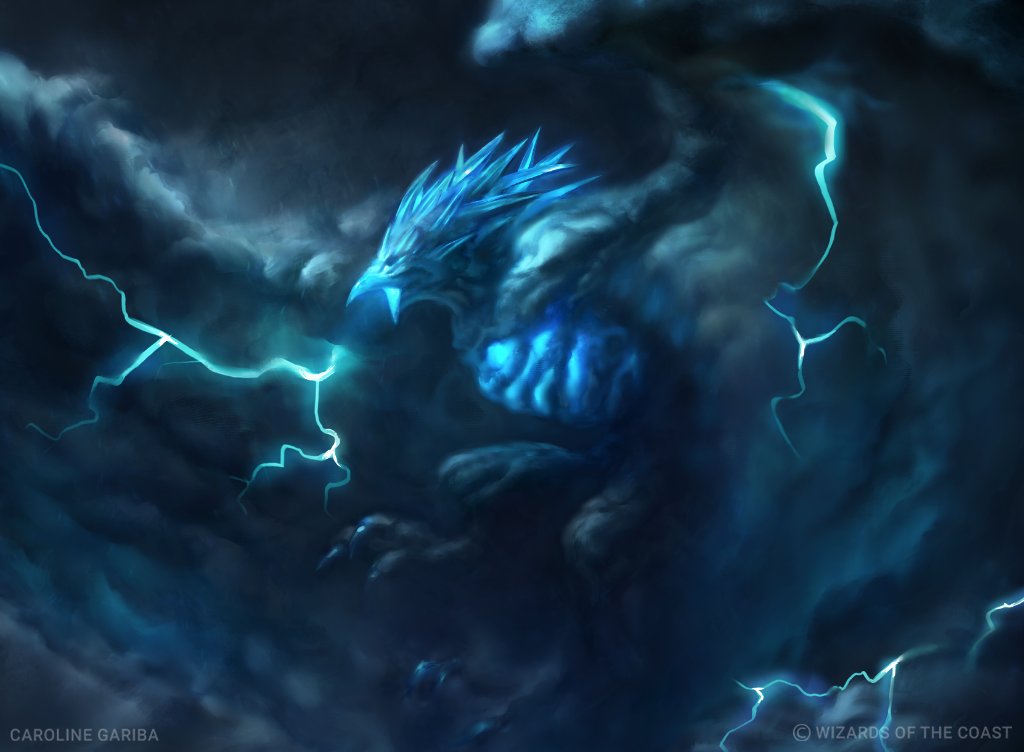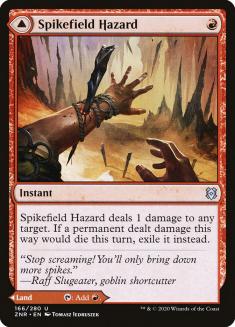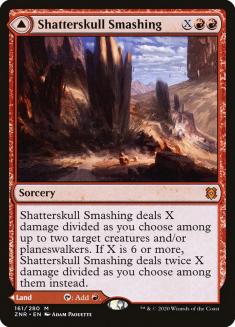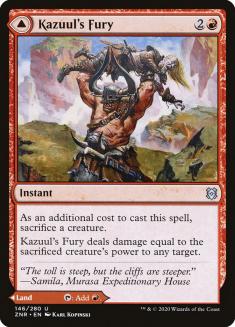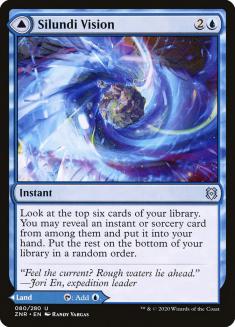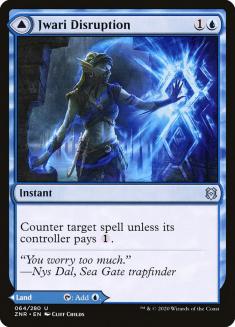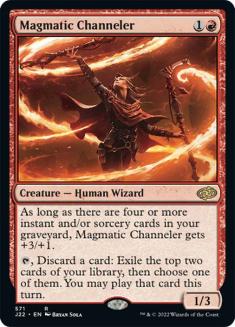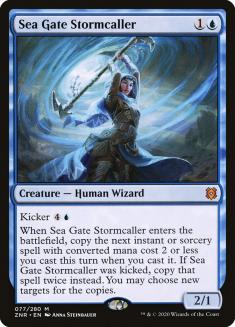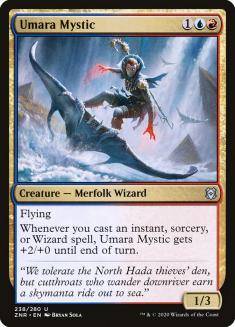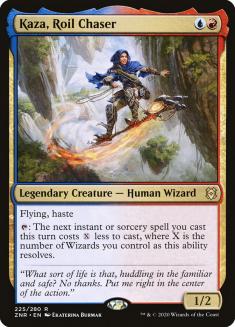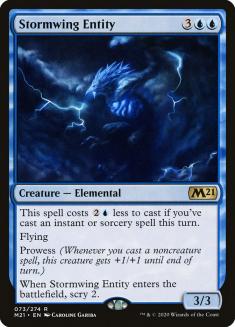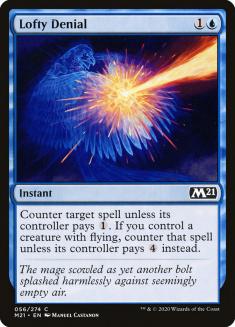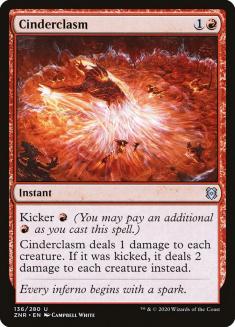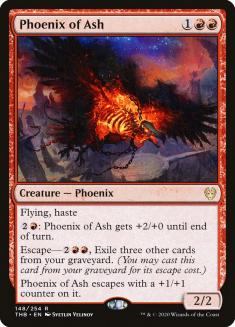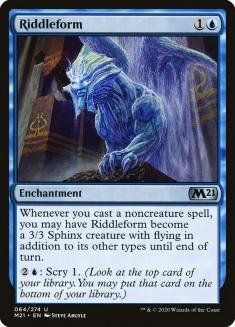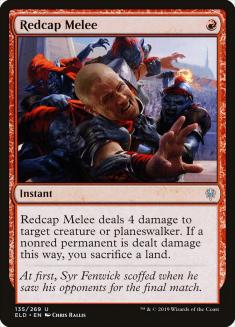Not that long ago, Izzet decks based around Arclight Phoenix were solidly Tier 1. Eventually, new cards were printed and the metagame changed, and Izzet decks were entirely forgotten. Now that we’re finally rid of Narset, Parter of Veils – and to a lesser extent Teferi, Time Raveler – perhaps it can be time for an Izzet Aggro deck based around spells to emerge again.
Even though a lot of cards that were very powerful against you rotated out, a lot of new, powerful cards came in to replace them, so by itself I don’t think this would have been enough to revitalize the archetype (even though it really can’t be overstated how much Narset hurt it). Thankfully, Zendikar Rising brings with it a lot of potential new additions to Izzet Aggro.
The first cards I’m interested in are the modal double-faced cards (DFCs). Historically speaking, the Izzet Aggro decks have always required a certain density of spells to be drawn, which made them a bit inconsistent. Flooding was a big punishment because running out of spells to cast meant that not only were you not casting anything new, but the cards you had cast previously didn’t work as well. Simply put, when you missed on finding the third spell to bring back Arclight Phoenix, you were down not only that spell but also the Arclight Phoenix itself, which made it a huge swing. Arclight Phoenix isn’t with us anymore, but the same principle applies to cards like Riddleform or Storming Entity.
Because of this, I believe the modal DFCs can be big game-changers for the deck. They increase your spell density by a lot while still allowing you to play the necessary number of lands to function. Obviously this is the case for every deck that can play modal DFCs, but it’s especially important for this deck, both because the stakes are higher and because this deck is often trying to find a good number of spells without necessarily worrying about which spells those are.
In a deck like Four-Color Ramp, if you play Spikefield Hazard, you’re getting either a red land or one damage, which is already pretty good. In Izzet Aggro, there’s a hidden third mode — you’re getting a red land, one damage, or a “spell.” There are moments in which you aren’t interested in a land or in dealing one damage, but with this deck, you’re very often just interested in having a spell, regardless of effect. It’s not uncommon, for example, to discard a Shatterskull Smashing to Magmatic Channeler, at which point you basically looted away a land, but you still got a spell in your graveyard to turn it into a 4/4.
Other than the modal DFCs, there are plenty of potential additions to the deck from Zendikar Rising. Let’s take a look at all the possible options from Magic’s new set:
Spikefield Hazard is perfect in this deck, as it’s a very cheap, instant-speed spell that can always be cast since it goes face. It’s also quite well positioned right now, as most of the decks have good targets — the ramp decks have Lotus Cobra, the Adventures decks have Edgewall Innkeeper, and the Mono-Red Aggro decks have their one-drops and Kargan Intimidator. You’d play this even if it was just one damage, but the exiling is actually a big bonus, as it makes it harder for people to bring back their Uro, Titan of Nature’s Wraths (remember that you can cast this on the first casting of Uro to exile it and make sure it’s not going to come back later).
The bar for a modal DFC that can enter the battlefield untapped is extremely low in this deck, and Shatterskull Smashing clears it comfortably; to give you an idea, I considered playing Sea Gate Restoration just to discard to Magmatic Channeler. For three mana, it can kill all the aforementioned one-toughness creatures and sometimes it kills two of them for one mana more.
That said, the most common number I cast Shatterskull Smashing for isn’t one or two. It’s zero. I wasn’t kidding when I said this deck really just wanted spells a lot of the time, and having a split card that’s a Mountain or a spell is definitely worth the occasional three damage you take, even if that spell often doesn’t do anything.
This is a deck that sometimes produces large creatures and has trouble closing; as such, Kazuul’s Fury might have a role. It’s especially strong with another Zendikar Rising potential addition, Umara Mystic, as that can grow quite large.
This deck has a ton of spells, but they’re all pretty interchangeable; there’s no one spell that you really want to draw above all others. As such, I find Silundi Vision a bit too expensive to consider. I’d be much more interested if it were just a cheaper cantrip, without the selection.
Jwari Disruption is a possibility because the front side is one we actually might be interested in playing, but the main issue is that both options are really bad late. I like the modal DFCs for their flexibility, but land and Force Spike are both cards I don’t want to draw later on. Besides, it’s a spell that you can’t just cast to power up your spell-matter cards, which means some of its functionality isn’t as good as the other modal DFC’s. Still, I could see being interested in this.
Magmatic Channeler does double duty in a deck like this — early on it fixes your draws and later on it beats down. The fact that you get your choice of two cards means it’s much better than regular rummaging and makes it more reliable to hit land drops or particular spells.
The one downside of the card is that it doesn’t work very well with countermagic. You usually want to use it on your main phase, and then if you hit countermagic it’s useless. When this card was released, I actually thought it was a bit overrated, but it’s been quite good for me to turn useless lands and Shocks into other spells later in the game and it’s not hard to get it to be a 4/4 beater.
This deck can almost never use the kicker on Sea Gate Stormcaller (a lot of your lands double as spells and you have Magmatic Channeler to filter them), but it’s still an appealing choice in the deck. If you pair it with Opt or Shock ,you’re getting a great deal for two mana.
The main downside of Sea Gate Stormcaller is that it’s yet another two-mana card that you’re not meant to cast on Turn 2, and as such it shares space with Stormwing Entity, which I think is a superior card. Overall I haven’t actually been super-happy with Sea Gate Stormcaller in this deck, and, though it wouldn’t surprise me if it ended up making it in some number, I lean towards zero copies.
I’ve always loved Wee Dragonauts, but it was never competitive. Umara Mystic, however, is significantly better, as it triggers on several of your creatures (including other copies of itself). Magmatic Channeler and Sea Gate Stormcaller, for example, are both Wizards. This means almost any nonland in the deck will trigger Umara Mystic, and it can make for some very explosive turns. That said, after playing with it I think it’s more cute than actually good, unfortunately (though it’s very close to being good, and I could see versions where it makes the cut).
This Izzet Aggro deck has a ton of Wizards, so Kaza, Roil Chaser seems like it could have a place. The issue is that, for the most part, your spells are very cheap — there aren’t many colorless requirements outside of Shatterskull Smashing. Because of that, there’s no real use for Kaza’s ability, and I don’t think it belongs in the deck.
The rest of the deck consists of the usual suspects — Sprite Dragon, Stormwing Entity, and a bunch of cheap spells. Since Bloodchief’s Thirst is so common, I’ve chosen Riddleform as my other threat. It’s randomly very punishing to people who overload on sorcery-speed removal, and between the cheap cantrips and the modal DFCs, this deck is quite good at triggering it.
Past that, I like a mix of Adventure creatures (Bonecrusher Giant and Brazen Borrower — they’re still good even if they don’t count as spells in the graveyard for Channeler) and counterspells. You’re not really trying to play a counterspell game, plus they don’t work very well with Magmatic Channeler, but you’re playing a slow-ish deck in a format where people can be doing broken things, so having some ways of stopping them is advisable (just make sure you don’t overload on them).
This is the list I’ve been playing:
Creatures (15)
Lands (17)
Spells (28)
- 4 Shock
- 4 Opt
- 4 Crash Through
- 3 Riddleform
- 2 Mystical Dispute
- 2 Lofty Denial
- 4 Spikefield Hazard
- 1 Kazuul's Fury
- 4 Shatterskull Smashing
Sideboard

This is definitely an aggressive deck, but it doesn’t play like Mono-Red or Mono-Green Aggro. Usually, you spend the early turns of the game setting up and then you attack in large chunks. Don’t feel like you need to rush and get your opponent low at the start of the game since most of your threats later on have flying, so you aren’t very inconvenienced by cheap blockers. At the same time, other late-game decks will go over the top of you, so you’re usually trying to consolidate your win in a relatively short window in the mid-game.
The most important factor in a lot of your matches is the amount of cheap removal your opponent can produce. I’ve felt favored against most versions of Four-Color Ramp, since they’re just trying to goldfish you, but unfavored versus versions that overloaded on Redcap Melee and Mystical Dispute. Your threats can often bypass what they’re doing, since they mostly fly, but if they have enough cheap cards that they can answer your threats and establish their own gameplan at the same time, you’re in trouble.
The deck can get quite math-heavy, but most of the time your hardest decision will be casting a spell now or saving it to get more triggers later on. As a general rule, I try to save my cantrips to at least trigger something – between prowess, Riddleform, Sprite Dragon or enabling Stormwing Entity, there are enough uses for them that I usually don’t cast them on Turn 1, and it’s better to play a tapped land or to simply do nothing. The one exception is if I don’t have a Turn 2 play — if that’s the case, then I cast them to find one.
For example, take this sample hand:
This hand has scripted moves on Turns 2 and 3, so there’s no reason to cast Opt on Turn 1.
Now, take this hand:
This hand has a use for Opt (you can cast Stormwing Entity with it on Turn 3), but it’s also lacking a Turn 2 play, so I would cast the Opt to try to find something to do.
Examining the Sideboard
It’s hard to have an exact sideboard guide right now, since we don’t know how the format will look yet. Because of that, I’ll give you a general rundown of what each card is for (though the sideboarding here is remarkably self-explanatory, as most sideboards tend to be at the start of a format).
Mystical Dispute is quite good versus any primarily blue deck, such as Dimir Rogues, and it’s also good versus Four-Color Ramp. I don’t like it versus control decks that are primarily black because it’s bad at fighting black removal.
This is also mostly for Four-Color Ramp. I like bringing a counterspell that deals with both Omnath and their big spells.
These are versus random aggro decks (though Cinderclasm is not good versus all aggro builds). Against some control matchups, you can also swap Shocks for Bonecrusher Giants.
Phoenix of Ash is versus control decks full of removal. Quite good versus all the black versions specifically, and people also might sideboard out Elspeth Conquers Death versus you.
The fourth Riddleform is also against control decks.
Redcap Melee is versus red aggro decks. Do not bring it in versus Omnath.
Against all aggro decks, you want to take out counterspells and Brazen Borrowers, and against the slower decks you usually want to sideboard out Shocks and potentially some copies of Crash Through if you expect the game to go super-long.
If you’re looking for a deck that isn’t Four-Color Ramp and also isn’t as one-dimensional as Mono-Red Aggro, I definitely recommend giving this a try. I don’t think it’s in its perfect form yet — the right balance of counterspells, removal. and Adventure creatures is quite tricky, for example, and there are some cards I still want to try, such as Embercleave and Unsubstantiate – but I definitely think it’s a good starting point for an archetype that’s surprisingly viable relative to how much attention it’s been getting.

